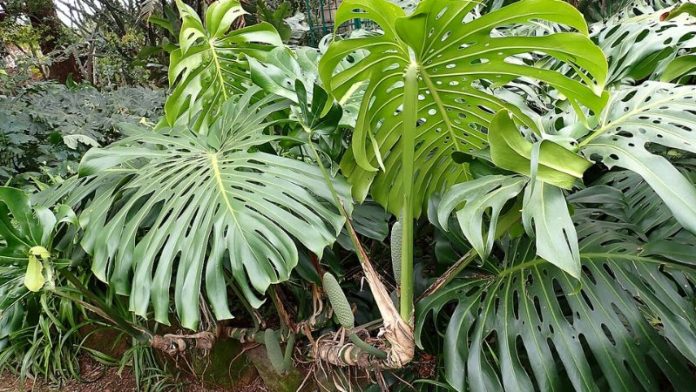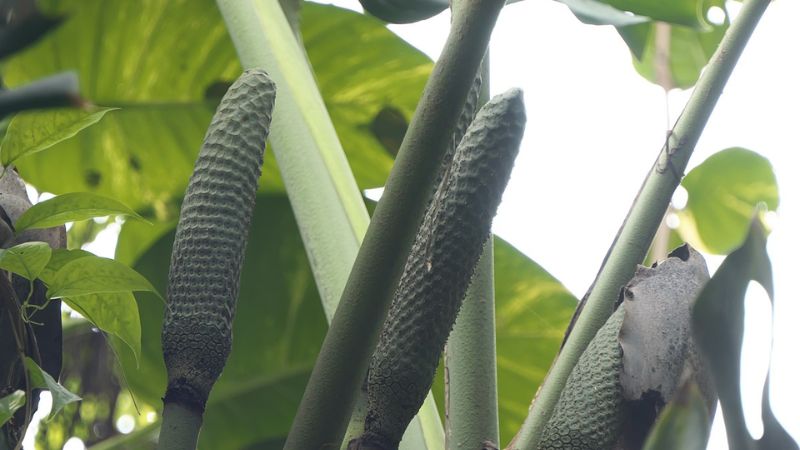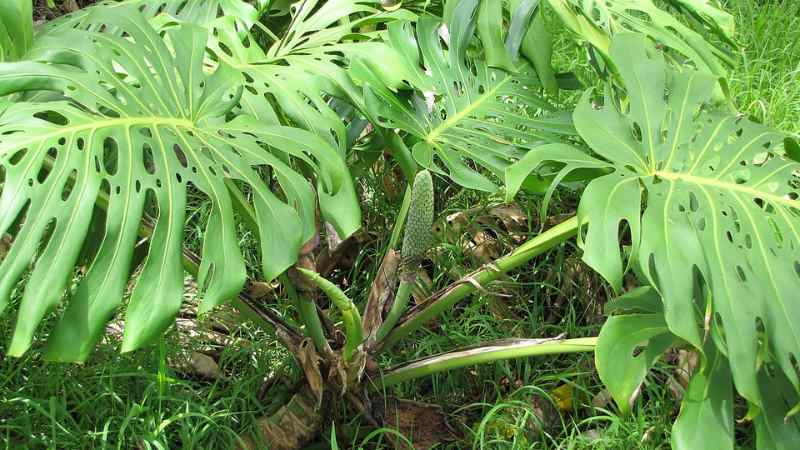
In the lush depths of tropical forests, among the variety of foliage, a botanical gem known as the Monstera deliciosa is hidden. Being famous for its characteristic unique foliage, this plant holds a secret beyond its stunning leaves – the tantalizing Monstera fruit. Monstera, also popular as Monstera Deliciosa or Monstera fruit is famous for its exotic and unique flavor. You will discover some unique types of Monstera plants, and ways you can grow them.
As an intriguing element of culinary adventure, Monstera fruit holds some undeniable charms that you should have a glimpse of… Imagine this! Trapped in a scaly exterior lies a treasure of juicy flesh, with the characteristic blend of tropical pineapple and banana. And with the hints of citrusy zest, the detectable delicious flavor of Monstera fruit holds up to the name “Deliciosa.” Let’s delve into the world of Monstera plants, exploring the types of Monstera plants, monstera fruit benefits, and 6 types of Monstera to grow.
Monstera Varieties – 6 Types of Monstera Plants to Cultivate

Start your journey by getting some insights about Monstera plants, their types, and how to grow different types of Monstera plants successfully.
- Monstera Deliciosa: The classic, most popular, and one commonly known type of Monstera plants is Monstera Deliciosa. It is renowned for its large, prominent, fenestrated leaves and flavorful fruits. It is ideal for tropical enthusiasts who seek a striking addition to their indoor or outdoor garden. Moreover, you can enjoy eating Monstera Deliciosa fruit as it packs a bunch of nutrients.
- Monstera Albo Borsigiana: A compact small cultivar with smaller leaves and fruit is perfect for urban dwellers to keep on your balcony. This montera plant is easy for those with limited space. Despite its diminutive size, it yields flavorful fruits which have high nutritional value.
- Monstera Variegata (Variegated Monstera): One of the types of montera plants also called variegated monstera species is adorned with striking foliage. This exquisite variety adds a touch of elegance to any botanical collection of your garden. While its fruits may be less abundant, their ornamental value is unmatched.
- Monstera Obliqua (Unicorn Plant): This monstera variety is characterized by its slender vines and perforated leaves, this interesting variety produces modest-sized fruits bursting with tropical flavor. It is also called a “unicorn plant” and is perfect for hanging baskets or terrace gardens. It adds a touch of whimsy to any garden space.
- Monstera Adansonii (Swiss Cheese Plant): Simply known as the “Swiss Cheese Plant,” this monstera species produces petite, pineapple-like fruits adorned for their intense flavor and characteristic aroma. It is ideal for adventurous palates seeking a tropical delicacy with a twist.
- Monstera Siltepecana (Silver Monstera): With its velvety foliage and intricate leaf patterns, this species captivates with its understated beauty. The name suggests it is a classical beauty. While its fruits may be smaller in size, they boast a rich, tangy flavor that delights the senses. You can enjoy eating these fruits anytime.
Cultivating Monstera Plants: Tips for Success

Cultivating and growing different types of Monstera plants can be a rewarding yet challenging task due to the plant’s specific requirements. Here are five essential tips to help you successfully grow the Monstera plant:
- Provide Necessary Growing Conditions: Monstera plants thrive in warm, humid environments with indirect sunlight. You need to choose a location with bright, filtered light, such as near a north-side window, to ensure adequate light without risking leaf burn. A humidity level of 60% and temperature of 65°F to 80°F favors the growth of the Monstera plant.
- Use Well-Draining Soil: Monstera plants need moist, well-draining soil that allows excess water to escape freely. Choosing a high-quality mix with excellent drainage properties, like a mix of peat moss, perlite, and pine bark ensures good growth.
- Water Wisely: Proper watering is crucial for Monstera plants. Allow the top inch (2.5 cm) of soil to dry out between waterings, then water thoroughly. Avoid overwatering, as it can lead to root rot, yellowing leaves, and other health issues.
- Fertilize Regularly: To promote healthy growth and fruit development, fertilize the different types of Monstera plants that you grew on your terrace. Fertilize regularly during the growing season (spring and summer) and learn how to grow in the winter season.
- Support Climbing Growth: Monstera plants are natural climbers, and providing support for their aerial roots can promote growth and fruiting. You can install a moss pole or other climbing structure within the pot to support the plant to ensure stability.
By following these five tips for how to grow Monstera plants, you can create an optimal environment for your plant to thrive. With patience, proper care, and attention to detail, you’ll soon enjoy the fruits of your labor as your Monstera plant flourishes.
In conclusion, the different types of Monstera plants offer nice intricate foliage, tantalizing flavor, and a bunch of health benefits that become the charm of any botanical collection. Whether you’re drawn to their striking pattern of leaves, exotic taste, or fruit, cultivating these tropical treasures ensures a joyous journey filled with botanical wonders. So, why not embark on your journey of growing Monstera plants?
Also Read: Growing Monstera plants isn’t a difficult task as these plants can easily be cultivated in any indoor garden or terrace garden with a little bit of care.





